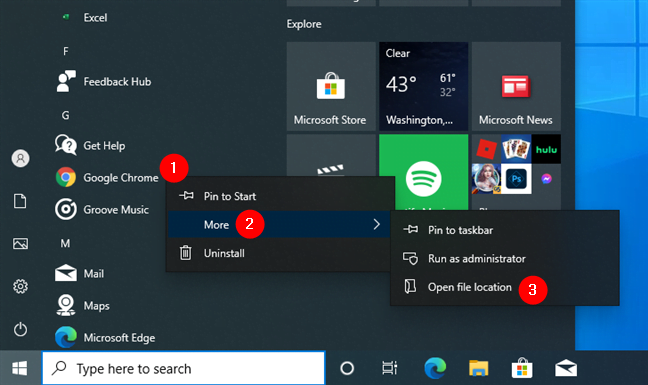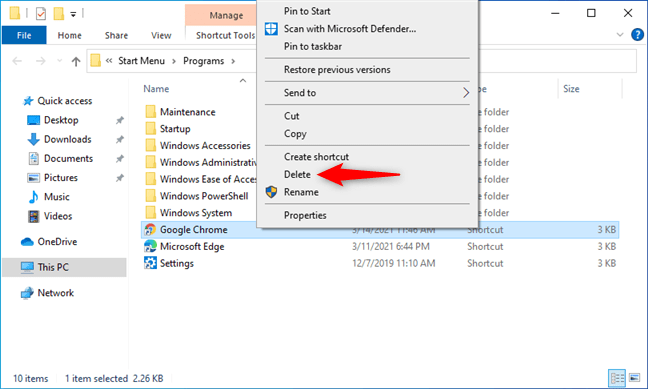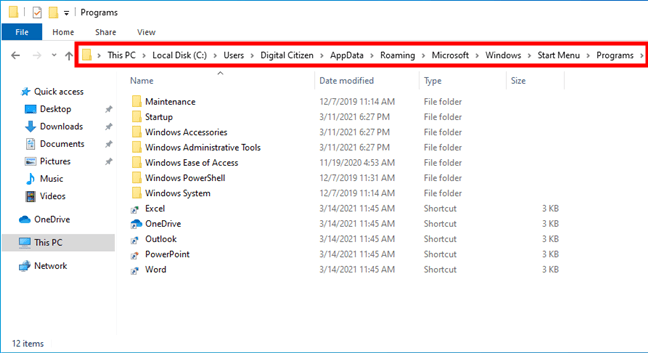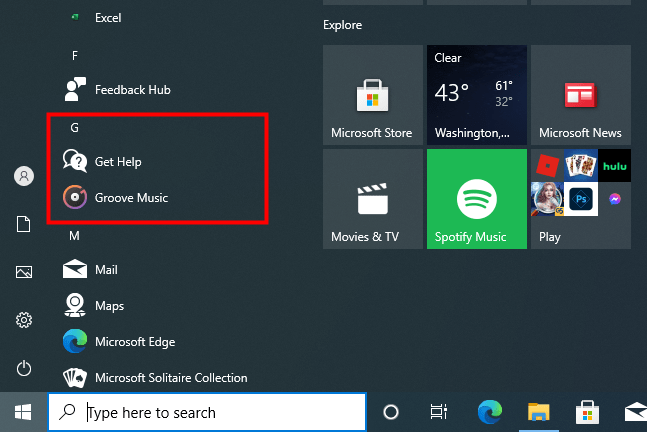How to Hide Apps in Start Menu on Windows 10
How to Hide Apps in Start Menu on Windows 10 : Would you like to sort out the Start Menu on your Windows 10 PC and wish you realized an approach to eliminate or stow away certain applications that jumble it up? Might you want to do all that without introducing a Start Menu substitution from an outsider? On the off chance that we have your advantage, read this aide and discover how to stow away applications from the Windows 10 Start Menu:
How to Hide Apps in Start Menu on Windows 10
To stow away an application from Start Menu’s rundown of applications without uninstalling it, first right-snap or press and hang on it. In the menu that appears, go to More, and pick “Open File Location.”

That makes Windows 10 open File Explorer and takes you to that application’s alternate way, situated in the Start Menu’s Programs folder.
To remove that application from your Start Menu, simply delete its shortcut from the Start Menu folder.

That’s it! Now the application’s shortcut is no longer shown in Start Menu.
As you can see in the following screenshot, the app we used as an example – Google Chrome – is now hidden from Windows 10’s Start Menu.
Note that the Programs folder is a system folder, and you can find it not in one, but two different locations on your computer. Don’t worry; the procedure we’ve shown always takes you to the right place. However, if you’d rather navigate manually to the Programs folder in order to find the app shortcuts to remove, make sure you check both Start Menu Programs locations:
- %AppData%\Microsoft\Windows\Start Menu\Programs – this is where you find the programs that are installed and available for your current user. Removing apps from here means not displaying them for your user account only.
- C:\ProgramData\Microsoft\Windows\Start Menu\Programs – this is where you find the programs that are installed and available for all the users on your Windows 10 PC.

Although working in the per-user Start Menu Programs folder mentioned earlier doesn’t require special permissions, working in the “all users” Start Menu (the second location) requires administrative privileges because the changes you make there impact all user accounts.


Comments are closed.